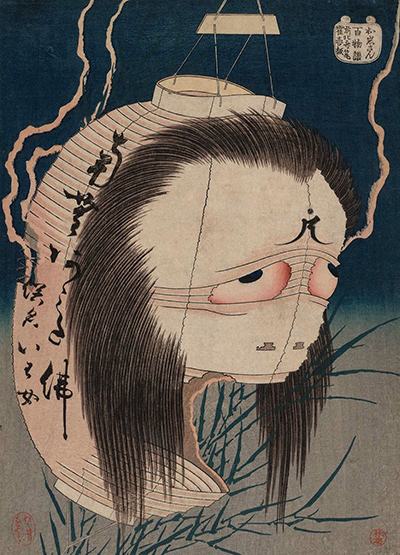Hokusai
The Ghost of Oiwa by Hokusai
Katsushika Hokusai’s work has been an inspiration for many artists around the world. During his lifetime (1769-1849), he has produced numerous artworks ranging from still-life portraits, erotic images, landscapes and depictions of everyday life. Hokusai had intended to produce A hundred Ghost stories, as the title of represents, but he only managed five.
The Ghost of Oiwa is one of the most famous Japanese artwork ever produced. It was published during the Edo period by artist Katsushika Hokusai between 1760-1849 and published by Tsuruya Kiemon. It follows the story of Oiwa, whose face is disfigured after her samurai husband poisons her so that he can marry into a wealthy family. Her husband hires an assassin to poison and dump Oiwa’s body in a river. Her husband treats here cruelly, even though she is still recovering from the birth of their first child.
She returns in various forms to seek revenge and kill anyone associated with her husband. In the end however, it is Oiwa’s brother who kills him to avenge his sister’s spirit. In this artwork, the picture is painted big with no details in the background. The ghost has a sulky face that gives a haunting sensation. This is in addition to the sparse hair, sad bloodshot eyes and eerie eye bags that droop from her face probably from the effects of the poison.
A close examination of the background reveals two colours, one dark and a lighter bottom, which blend together to create more mystery and confusion. The artwork portrays a lantern with a head on it. It seems to balance itself delicately on plants that seem thin and fragile. The main content is centred and everything in the back is small or non-existent. The use of the character and the paper lantern give it a Japanese outlook. The painting seems to have received a lot of attention from the artist especially evidenced by the strokes used to paint the hair. They seem to have been given a lot of thought given the refined lines and that they are transparent.
